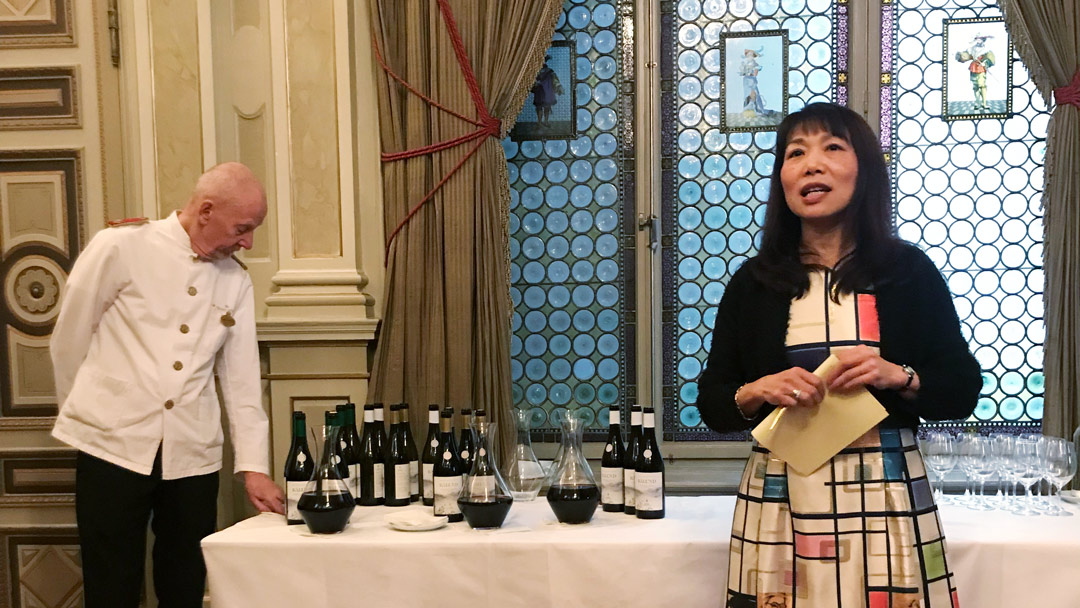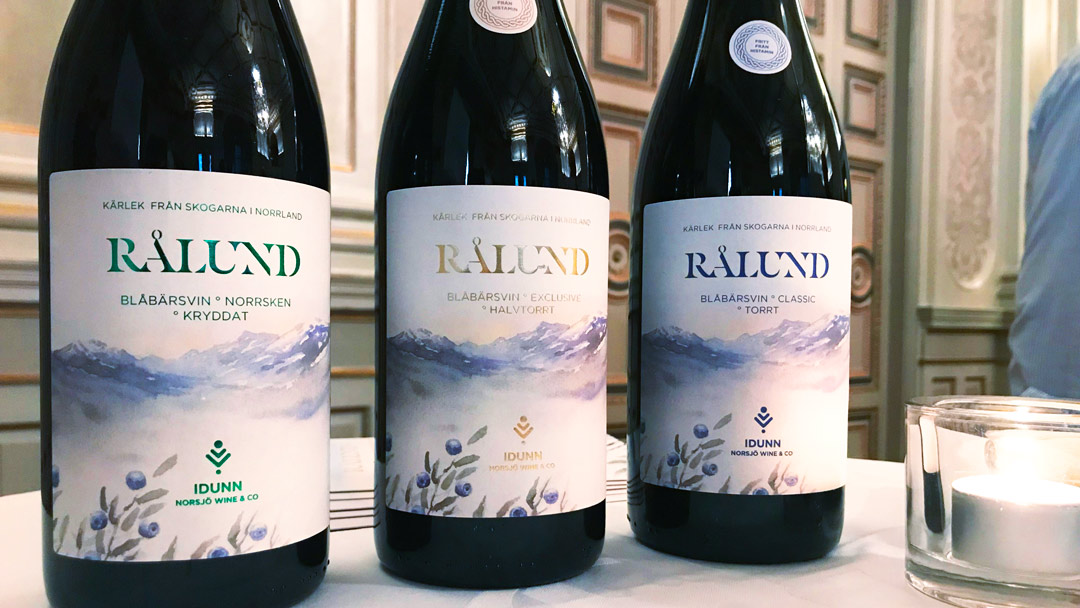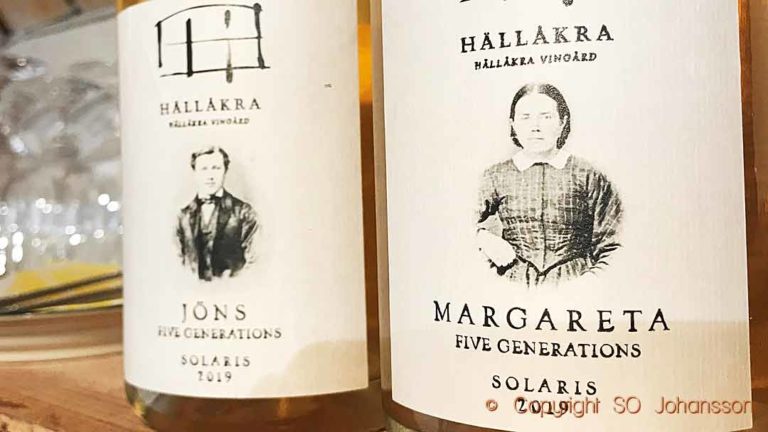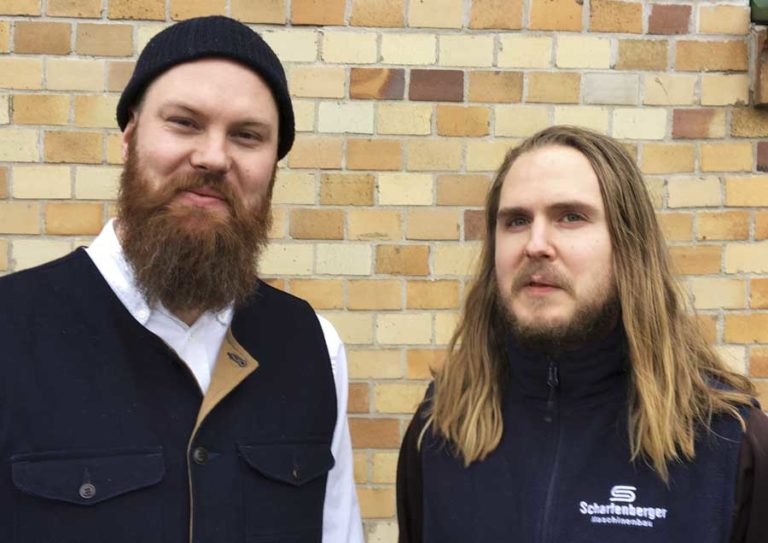“The wine world’s outsider, literally”
Imagine starting a journey in Jerez down in the sherry triangle and finishing it up among the riesling vineyards in Piesport, Germany. You will then have travelled almost two thousand three hundred kilometres and covered most of Europe’s vineyards. That’s what you might have thought anyway. If you continue the journey two thousand three hundred kilometres further, you will end up in Skellefteå, where other crops grow. Wild fields of … blueberries. BKWine Magazine’s reporter Sven-Olof Johansson tells the story of a tasting of a different “wine”.
It is easy to fall back on your own knowledge bank and dismiss ideas that you judge as too insane in whatever area it may be. When the production of amarone started in the fifties it was most likely something that some people looked down their nose on but the wine lives and thrives. Today, a winemaker in Skellefteå is working fervently to produce wine from blueberries. A very serious commitment to a drink based on a small blue berry with fantastic qualities. [Ed’s note: According to EU rules, “wine” is made from grapes. If you use other fruits it is called “fruit wine”.]
In 2012, the first bottling was made, but the work started much earlier. Blueberries cannot be domesticated and grown on a farm but at these northern latitudes conditions are good for wild, flavourful berries that ripen late, with balanced acidity, a light sweetness and plenty of aromas. The small berry, Vaccinium myrtillus, the European blueberry, should not be confused with the not very flavourful American blueberry or other species. Parallels can be drawn to other plants that may struggle and mature slowly at the northern latitudes. A Swedish strawberry with its fireworks display of aromas compared to the plain-knit Belgian strawberry for example.

Lars Normark and Li Holmberg found the berry so interesting that they began to experiment with the winemaking. The first experiments were carried out at home in the laundry room, but today it is a completely new and modern facility which in 2018 produced 15,000 bottles. The berries are purchased from Norrbotten and Västerbotten (two northern Swedish counties), they are frozen and cleaned mechanically to remove all stems. But winemaking is a craft, good raw materials and a happy mind is not all the way forward.
After an extended search, the winemaker and oenologist Alexandra Beaulieu Boivin from Canada was engaged. Today there are three cuvées, two of which are in Systembolaget’s (the Swedish alcohol monopoly) temporary range. A lot goes on export and some restaurants have taken on the drink, including the Stadshuskällaren in Stockholm.
Rålund Classic
Systembolaget no. 33353. 185 kr. 100% blueberries (it feels a bit strange to write so !!)
Fresh, lovely nose with elements of red berries and earth. If you put aside your preconceived notions, does it perhaps give a hint of something like Beaujolais? The taste also surprises with a neat and fine tannin structure, high acidity and a fairly good length. The body is light and slim. Surprisingly good.
Rålund Norrsken
Systembolaget no 33350, SEK 285. 100% blueberries.
The scent that fills the nose is dense, rich, spicy and sweet. Mulled wine, this is definitely something like that. Very spicy and almost like smelling a freshly baked cardamom bun with hints of cloves and maybe a little cinnamon. The acidity does not quite back up the sweet element why it probably appears sweeter than it really is. We have passed the Christmas season, but if you replace the same old glühwein with this, the guests will definitely have something to talk about.

Rålund Exclusive
100% blueberries.
Very beautiful ruby red colour with lovely shine. Gentle fragrance with some earthiness and hints of forest-floor leaves. On the nose we find ourselves very far away from Västerbotten. Tasted blind few would have guessed blueberries but rather something like pinot maybe. The taste is slightly sprawling and it almost tickles the tongue. Much like other wines that have just been bottled, which was the case with our sample. The acidity is modest and the tannin structure is neat and discrete. Around the table, several people mention dark plums and violet, but I want to add to that some liquorice as well. A feeling of being well-made but probably this one will benefit from being left untouched for a year or two.
Summing up the tasting I must give big kudos to the energetic entrepreneurs who have gone all the way and actually reached the goal. The bottles are now available at Systembolaget, exports are increasing and the enthusiasts in the winery are turning into winemakers with growing experience. Production will continue to improve and how the wines will develop with age will be exciting to discover. Oak vats have been ordered which will be used for a new cuvée. It’s delicious, it’s fun and it’s different.
More info: idunnwine.se
Sven-Olof Johansson is a wine enthusiast in Stockholm with a long history of wine tasting experiences.










